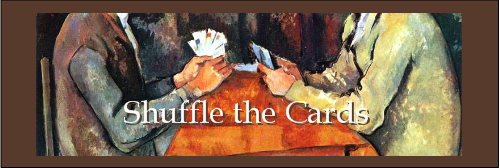
We got off a bus at Plaza Zocodóver, then walked up to the Alcázar. We stopped in some shops and looked at the Toledan crafts (swords and damascene). We returned to Plaza Zocodóver and looked at the shops selling marzipan. Here is the plaza:
The Alcázar was built in the 16th century atop the ruins of a Muslim fortress. It served as a military fort through much of its subsequent history and is most famous for its role in the Spanish Civil War. In 1936, Franco's Nationalist forces were besieged in the fortress. The Republicans held the son of the colonel commanding the troops inside the Alcázar and demanded the Nationalist officer surrender or his son would be killed. The colonel supposedly told his son to pray and to die like a hero as he refused to surrender. Some accounts claim the Republicans shot the colonel's son immediately after this while others claim he died later as a prisoner of war. Nontheless, the attempt at the siege failed and the building sustained heavy damage, being restored soon after.
After leaving the area of the Alcázar, we walked down some winding streets on our way to Toledo Cathedral (built from 1226-1493).

We finally emerged upon the Cathedral and spent some time in the plaza in front of it, taking pictures:
We went inside the Cathedral and saw some of its famous paintings including some by the famous Toledan resident, El Greco, along with Caravaggio, Raphael, and Rembrandt. We spent the rest of the afternoon wandering through the streets of Toledo, passing the house of El Greco and arriving in the old Jewish quarter. One of the things Toledo is most famous for is the flourishing culture in the early middle ages in which Jews, Christians, and Muslims lived in peace for several hundred years. Beside the former synagogue stood this statue of Samuel HaLevi, a Jewish poet, theologian, and warrior from southern Spain who lived in the early 1000s:
We passed through some neighborhoods with horseshoe-arch doorways inspired by Arabic design. Not far from here I dropped my camera and the focus broke on it. My parents bought me a new camera as my birthday gift after this, for which I am extremely thankful. We left Toledo and returned to Madrid where we ate at a little bar near Museo Reina Sofia. I ordered octopus in marinara.
The next day I had to work, but met my parents after school and we went to Madrid. We spent most of the afternoon walking through Parque Retiro. I tried out the new camera here:
We admired the crystal palace and the pond in the park.
The next day I got off work and met Mom and Dad at the train station near my apartment. We went to lunch at a tapas bar I had never tried before which was away from the city center, past the Cathedral. We then walked around town some more before I left for tutoring. After that I met up with them at Plaza Cervantes and we took the train into Madrid. We visited the Prado and got to see most of the main exhibits: Goya, El Graco, Velazquez, and Bosch. After the museum closed, I took them to Malasaña, where we walked around the nightlife and ate at a tapas bar, which was very good. I ordered migas, breadcrumbs, sausage, ham, and potatoes fried together. After dinner, we visited the Belgian bakery nearby where Dad and I got a coffee.
The next day I met Mom and Dad at the train station after work and I took them in to see the apartment. We went to Madrid to see the Harley shop in the AZCA district. We got some pictures of Plaza Castellana from here:

After this we took the metro to Plaza de España and took pictures of the monument to Spain's Siglo de Oro (Golden Century) the 1600s, when Spain's economy was falling, but its cultural accomplishments thriving. The monument shows figures representing the Empire on one side and Cervantes and his fictional creations on the other.
We walked from here to the Egyptian Temple of Debod and took pictures as the sun set: 
After the temple, we walked to the gardens of the Palacio Real and took pictures of the garden and palace grounds:

After the temple, we walked to the gardens of the Palacio Real and took pictures of the garden and palace grounds:

We then walked into the center of Madrid, heading to Plaza Mayor where we were going to eat at Museo de Jamon again. On the way there, we ran into Cody along with Nicole and Lindsay (friends of ours who were also visiting that week). They were leaving an Irish pub, celebrating St. Patrick's Day. We all stood outside Plaza Mayor and talked for a long while, noting how strange it was for us to bump into one another. We parted after this and Mom, Dad, and I went to eat. This was their last night in Spain and I was very sad to see them go. It was a lot of fun being with them and showing them the things I had been doing and seeing the past months.




























































